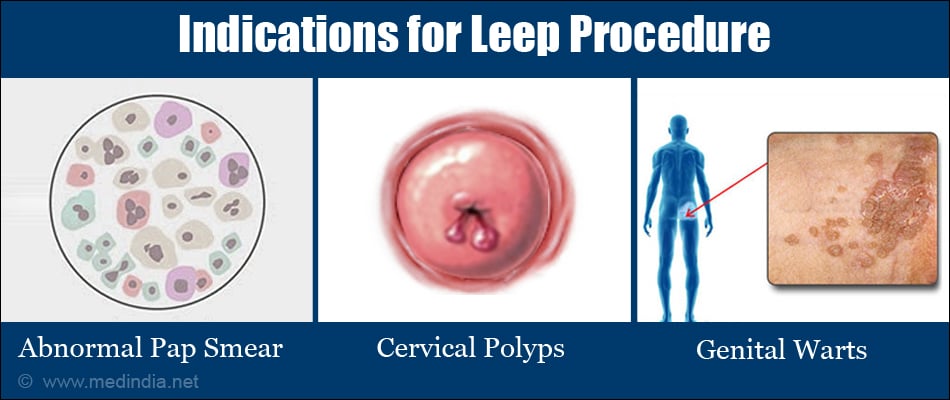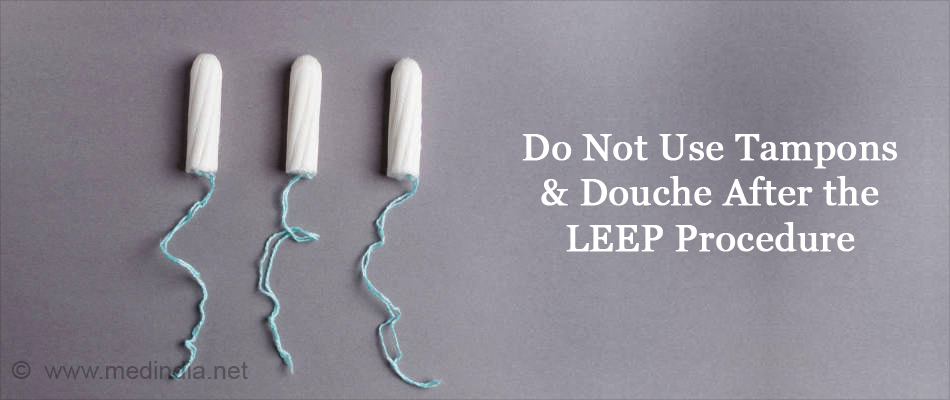What is Loop Electrosurgical Excision Procedure?
The loop electrosurgical excision procedure is a surgery done to remove a thin layer of tissue from the cervix using low voltage electric current to permit healthy tissue to regrow. It is alternatively referred to as large loop excision of the transformation zone (LLETZ).
It is done as a diagnostic and treatment procedure of precancer and other abnormal lesions in the cervix. The removed tissue is sent for microscopic analysis to confirm the diagnosis.
The cervix is the lower portion of the uterus and opens inferiorly into the vagina.
Before development of cancer cervix, it evolves through a precancerous stage when the lining cells (epithelium) of the cervix start to look abnormal or show dysplasia. Depending on the degree of dysplasia, it is categorized as mild, moderate or severe. The Pap test (smear) is a screening procedure done at regular intervals in women over the age of 21 to look for abnormal or dysplastic cells in the cervix.
In mild to moderate dysplasia, the risk of progression to cancer is somewhat lower compared to severe dysplasia associated with a higher risk of progression to cancer.
The following are some of the reasons a LEEP procedure may be done -
- Abnormal Pap smear results (dysplasia) or colposcopy results
- Cervical polyps (benign growths)
- Genital warts indicating possible human papilloma virus (HPV) infection, a sexually transmitted condition with risk of progression to cancer
- Diethylstilbesterol (DES) exposure in women whose mothers took DES during pregnancy, and are at risk for a certain type of cervical cancer
If your doctor decides to do a LEEP procedure after conducting a thorough physical examination or following abnormal Pap results, the procedure will be explained to you and you may at that point clarify any doubts or questions that you have.
- The procedure is usually done after the menstrual period for better visualization of the cervix and you will need to plan accordingly.
- It is usually done as an outpatient procedure under local anesthesia.
- If there is a chance that you are pregnant, you will have to inform your doctor.
- If you are regularly taking blood thinners or NSAIDs such as Ibuprofen, you will be asked to stop these for a few days before the procedure.
- You should inform your doctor about any other regular medications or supplements that you may be taking.
- It is important that the doctor should also be informed about any drug allergies, allergy to latex, plaster or iodine that you may be having.
- You will be advised not to use tampons, vaginal creams, douching or have sex before the procedure.
- Generally no preparation such as sedation or overnight fasting is required since it is an outpatient procedure done under local anesthesia.
- You may be asked to take an analgesic about half an hour before the procedure.
- You may be required to bring a couple of sanitary napkins to use after the procedure.
- Any other instructions your doctor gives has to be followed. You will have to report to the hospital early in the morning on the day of the procedure.
- You will be asked to take off your clothes and be given a surgical gown to wear.
- You will be asked to empty your bladder and lie down on the examining table with legs folded and spread apart as for a pelvic examination.
- A local anesthetic may be infiltrated in the area of the cervix, called a cervical block. Occasionally an intravenous painkiller may be given for added pain relief if needed.
- An instrument called speculum will be inserted into the vagina and the walls of the vagina separated to expose the cervix.
- Following this, the doctor will examine the vagina and cervix with a colposcope, an instrument with a magnifying lens similar to a microscope to enable clear delineation of the vagina and the cervix.
- An acetic acid solution may be applied to the cervix that will make the abnormal tissues white. You may feel a slight burning sensation when this is done. Sometimes iodine solution may be applied on the cervix to delineate abnormal areas (Schiller test).
- A special forceps called the tenaculum is used to grasp the wall of the cervix. You will feel some discomfort and cramping when this is done.
- You should lie perfectly still while this procedure is being done.
- The LEEP wire is then passed through the speculum and the abnormal tissue removed by passage of low voltage electric current. More than one pass may be necessary depending on the extent of abnormal tissue. Inform your doctor if you feel faint or severe cramping during the procedure.
- To ensure all abnormal tissue is removed, a thin area of normal surrounding tissue is also removed. The tissue will be sent for histopathological analysis.
- The size of the LEEP wire and amount of tissue removed depends on whether the procedure was done for diagnosis or treatment.
- The electric current will also seal the blood vessels and usually there is little bleeding. Any bleeding from the site may be controlled by application of a topical paste.
- You may be asked to lie down and rest for some time after the procedure till you feel well enough to stand up. You will be discharged soon after the procedure.
- It is normal for you to have some pelvic cramping and dark colored vaginal discharge (due to the topical paste) for a day or two.
- You will be advised not to use tampons, douche or have sex for a few weeks following the procedure.
- Painkillers may be prescribed as required and a course of antibiotics to prevent any infection.
- There may also be some restrictions on activities such as lifting heavy objects or other strenuous activities for a few days.
- You will have to return for a review a few days later and to collect the pathology results, and to discuss further course of management as appropriate.
LEEP is a safe procedure and complications are hardly reported. Rare complications, however include the following:
- Excessive bleeding
- Infection
- Narrowing or stenosis of the cervix
- Severe cramping
- Very rarely, premature labor has been reported in a pregnancy that follows LEEP procedure












